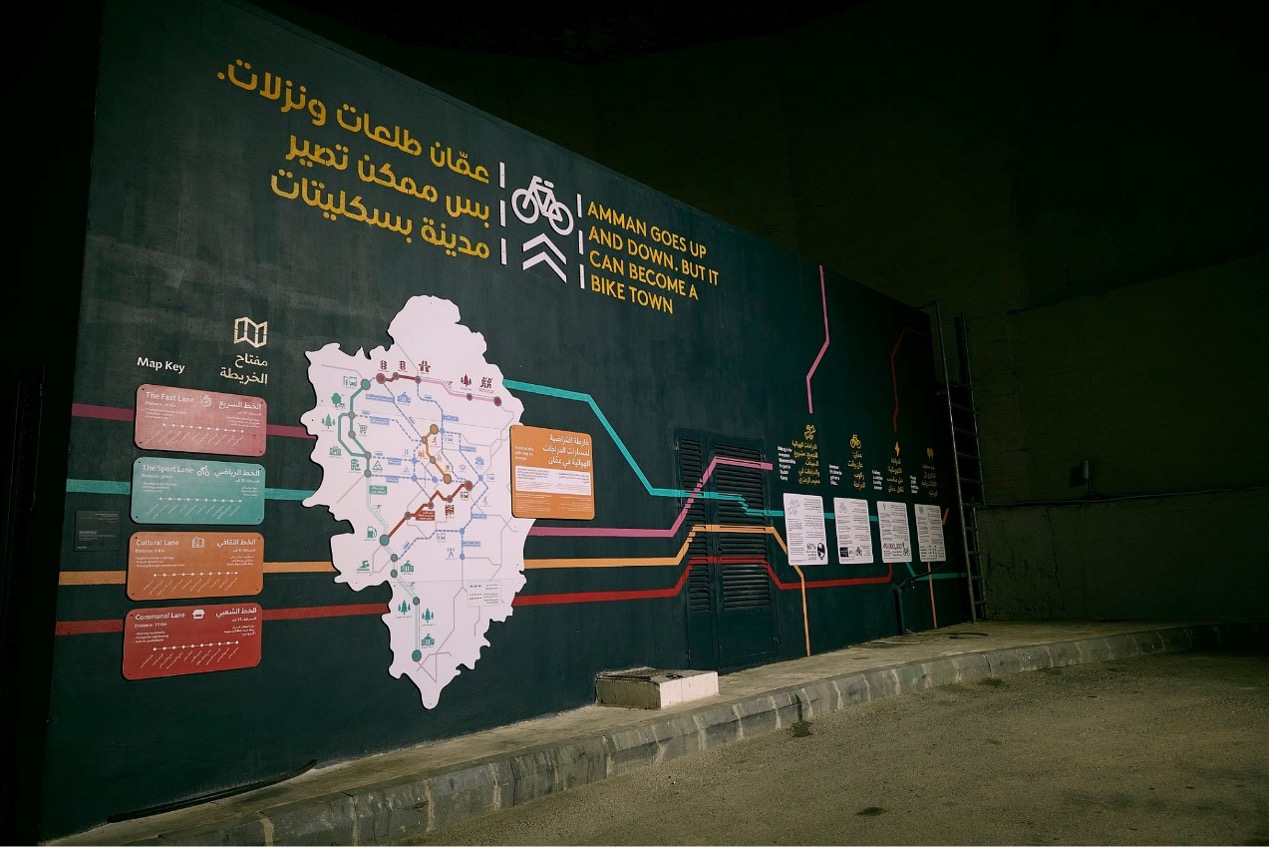
Close

Approach Words: Integrated City, Sustainability, Urban Livability
Public Policy Instruments: Communicative, Planning
The Amman Cycling Map is a mapping initiative that identifies the main routes frequently used by cyclists across the city.1 It was created in response to the increasing number of traffic accidents involving cyclists and the broader challenges faced by cyclists in Jordan.2 As Amman is widely considered an unsafe city for cycling, this initiative represents a significant step in urging the government to address the needs of cyclists and improve road safety.3

Title: Amman Cycling Map Displayed in Amman Design Week
Source: Click Here

Title: Amman Cycling Map
Source: Click Here
The project tackles this urban challenge by advocating for safer cycling routes, both for recreations and transportation purposes.4 Beyond mapping frequently used cycling routes, it incorporates research and practical recommendations to help prevent accidents.5 As cycling gains traction as an activity beyond the realm of sports, particularly among foreign workers commuting to downtown areas, the initiative aims to make cycling a safer and more viable mode of transport.6
The Amman Cycling Map was developed based on real-world data, considering factors such as street inclines, traffic congestion, and roadside space for potential bike lanes.7 In addition to reflecting existing cycling patterns, it highlights hazardous routes, particularly on highways, proposing solutions such as constructing separate parallel roads or adapting existing ones to better accommodate cyclists.8
The map’s design was completed in one month, following several months of observation and data collection. Created voluntarily by its designers, the project is driven by a strong personal commitment to advocating for pedestrians and cyclist rights in Amman.9


According to the designers, public support and awareness are essential for the project’s success. Social media and community outreach efforts are crucial in demonstrating the feasibility of a cycle-friendly city. As awareness spreads and public demand increases, citizens can play a crucial role in pushing for safer cycling infrastructure. Once momentum reaches a tipping point, policymakers will be encouraged to integrate these recommendations into urban planning. Community engagement and public pressure will be key to transforming this initiative into a tangible improvement for cyclists in Amman.10
The project was initiated by designers Ahmad Asem Al-Hiari and Yassin Al-Tubor.11 They developed it using data provided by Suhail Abusameed from the Zaatari Women’s Biking Initiative, along with insights from the Center for the Study of the Built Environment and Cycling Jordan.12
Project Link
Endnotes
N.A.
References